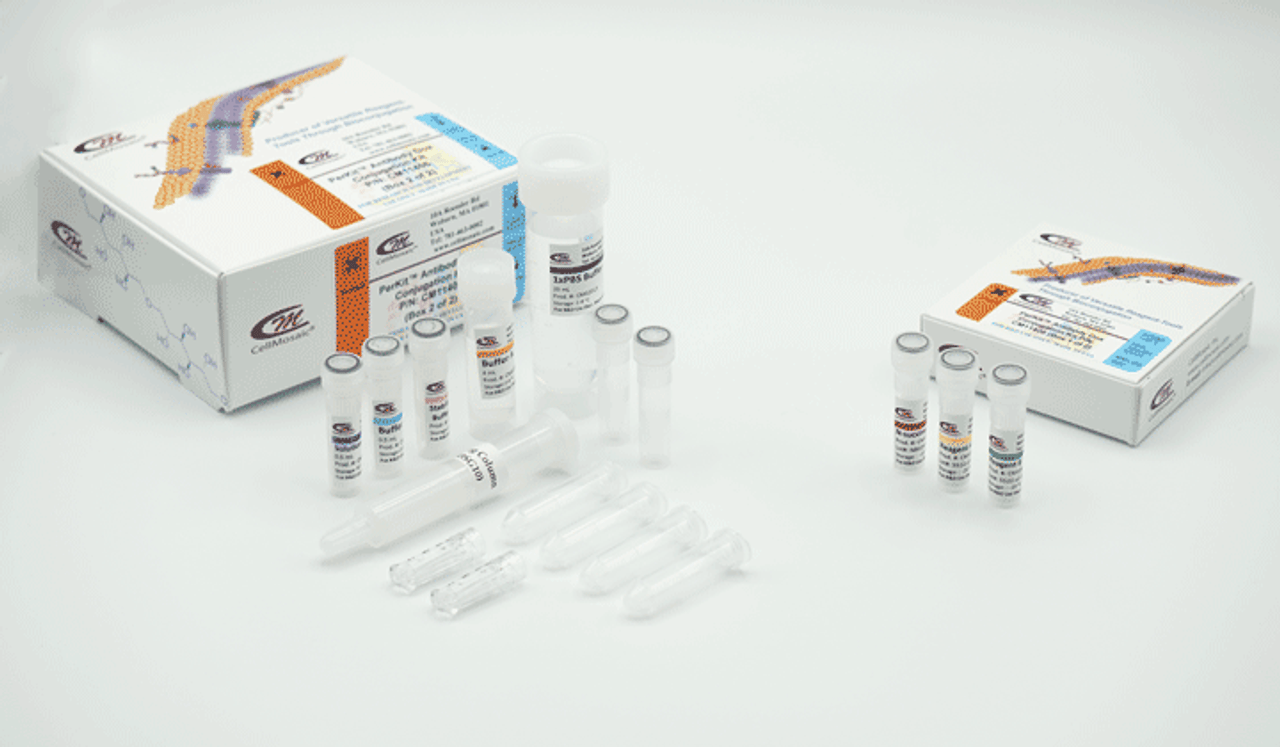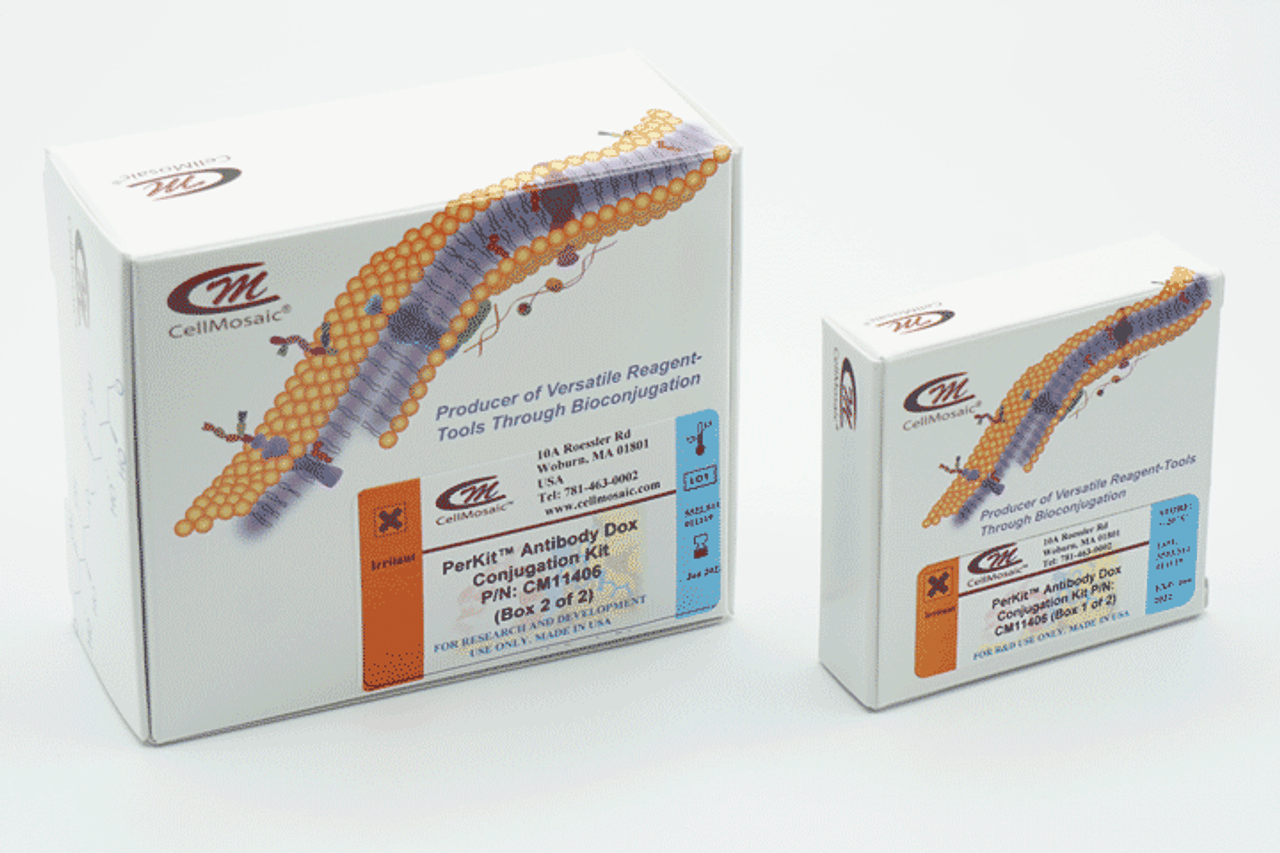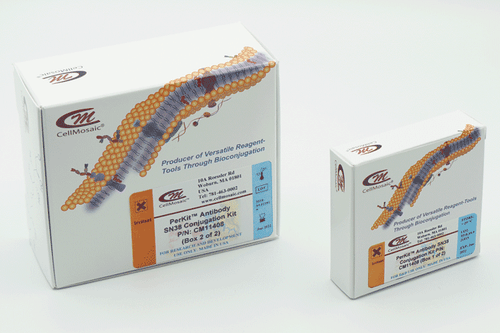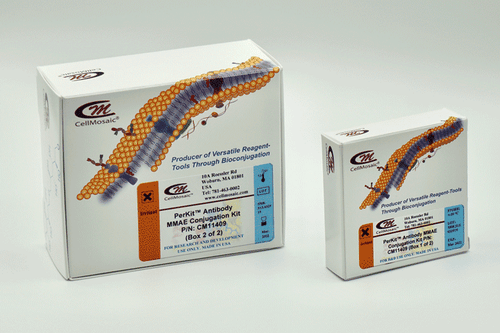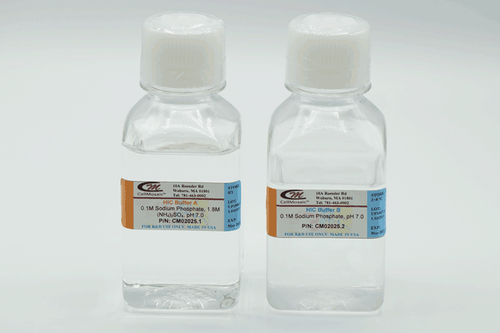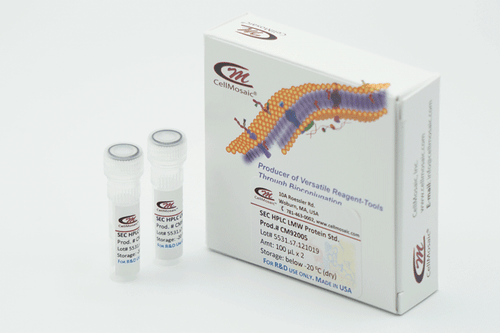Product Description
CellMosaic® has designed this kit for antibody (IgG) labeling of doxorubicin (Dox) for early stage screening of your antibody.
| Download Documents | |
| SDS | USER MANUAL |
Doxorubicin is an anticancer drug on the World Health Organization's List of Essential Medicines (the most effective and safe medicines needed in a health system). This kit is designed to label any antibody (IgG type) with doxorubicin via succinic acid linker (N-succinyl doxorubicin acid is included in the kit). The user supplies the antibody. Using the kit components, the user converts the carboxylic acid of doxorubicin to an activated sulfo N-hydroxysuccinimide ester (NHS ester), followed by reaction with the surface amines of the antibody. The product is then purified to remove any unreacted drug.
This kit provides materials to conjugate 1-3 mg of one (CM11406x1) or three (CM11406x3) antibody samples (IgG) with doxorubicin (Dox).
If you have a smaller amount of IgG, non-IgG type antibody, or other customization needs, please select the customization radio button and/or fill out the information above.
Drug Information
- Name: Doxorubicin (trade name: Adriamycin)
- CAS number: 23214-92-8
- Mechanism of action: Intercalation of DNA and inhibition of macromolecular biosynthesis.
- Medical usage: Breast cancer, bladder cancer, Kaposi's sarcoma, lymphoma, and acute lymphocytic leukemia.
- ADC usage: Doxorubicin has been linked to an antibody and found to be effective in treating lung cancer (Ref. Trail, PA et al. 1993, Science, 261, 212-215)
Requirement for Antibody
1. Preferably > 90% pure by gel electrophoresis
2. Total amount: 1-3 mg (protein content as measured by UV).
Key Features of this PerKit™
- Offers a simple and easy way to label IgG with Doxorubicin with minimum expose to the chemotherapeutic drug
- Stable linkage
- Fast and easy preparation: 4 h preparation and <1 h hands-on time
- DAR with average 4 Dox per antibody
- Included stabilization buffer for long-term storage
- More than 99% conjugated products (free of any unreacted drugs)
- Options to choose tailored services at CellMosaic® after conjugation
After conjugation: you can choose to send your sample to CellMosaic® for HPLC analysis and determination of the DAR.
Conjugation Chemistry

Protocol

Examples of Doxorubicin Labeling of Antibody
Figure 1: SEC HPLC analysis of purified Dox-ADC with average 5 Dox per antibody (Inset: UV/Vis spectra of Dox-ADC). Scale of the reaction: 2 mg of antibody.
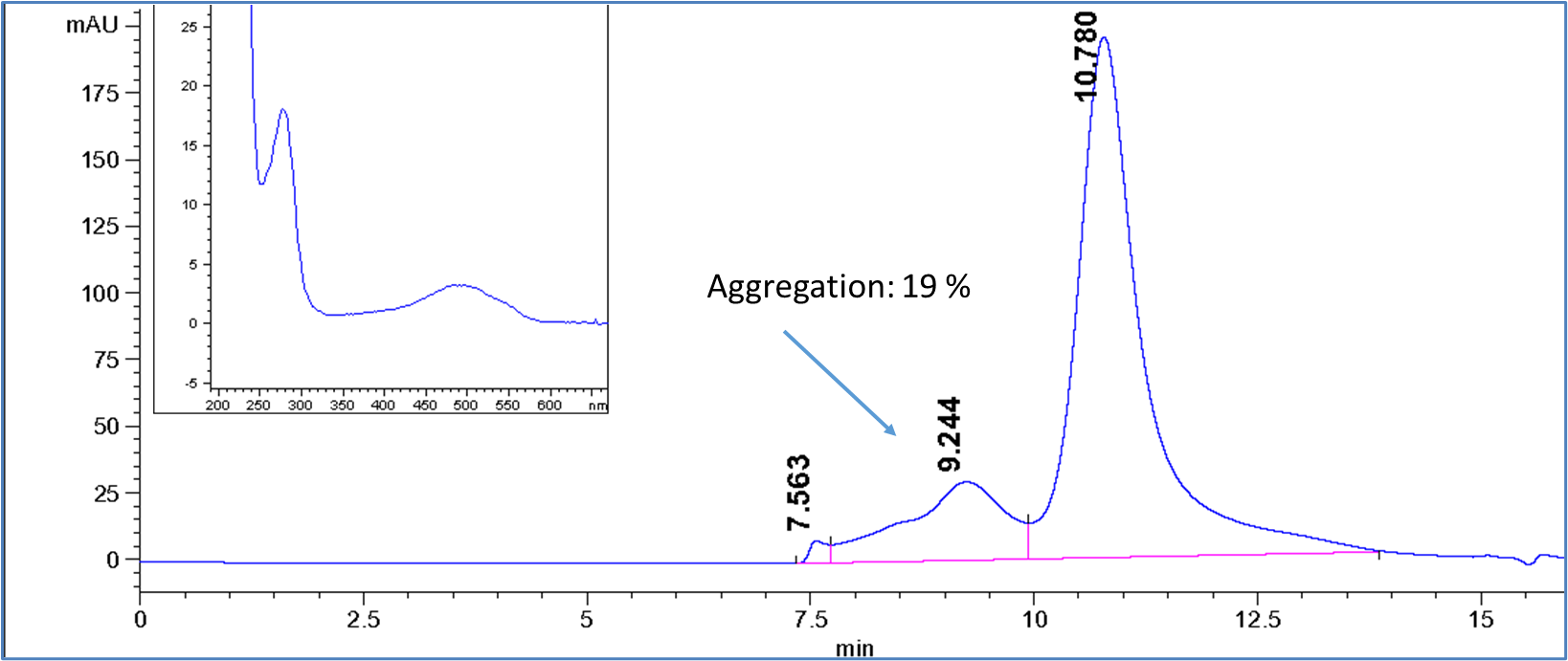
Summary of the results:
|
|
Reaction |
|
R value (consider the total peaks) |
0.2194 |
|
Average DAR based on R value |
5.18 |
|
Extent of antibody aggregation (%) |
19 |
|
Unreacted Dox (%) |
0 |
|
Recovery (%) |
67 |
Other Considerations
Drug-to-Antibody Ratio (DAR) and Characterization by UV and HPLC
In this kit, the target DAR is 4. To estimate the DAR, you can obtain the UV absorbance ratio (R) of your conjugate at 481 nm and 280 nm.
R = (A481)/(A280)
The unlabeled antibody has no absorbance at 481 nm. A Dox-ADC with DAR of 4 will have an R value of 0.175.
You can also use the following formula to calculate the estimated DAR (for reference only):
DAR = (30.26 x R)/(1.5 - R)
Dox: E280 nm = 6940 M-1cm-1 (data from CellMosaic®) and E481 nm = 10410 M-1cm-1 (Tian, Y., Bromberg, L., Lin, S. N., Alan Hatton, T., and Tam, K. C. (2007) Titration microcalorimetry study: interaction of drug and ionic microgel system. J. Contr. Rel., 121, 137-145).
Antibody: E280 nm = 210,000 M-1cm-1 and no absorbance at 481 nm
Aggregation and Precipitation Issue for Dox Labeling
Dox is very hydrophobic. Antibody-drug conjugates (ADCs) with average 4 Dox per antibody tend to aggregate and precipitate out from the solution over time. It is recommended that the labeling experiment be planned right before your other experiments. This kit is designed to minimize the aggregation and precipitation issues generally seen with Dox labeling. However, you may still notice some solid precipitate out or ADC aggregation during the reaction. The precipitate will be removed during purification. Depending on the properties of your antibody, recovery will be 40-80%. If you are concerned with the aggregation, you can use size-exclusion chromatography (SEC) to check the extent of aggregation. If you do not have access to such a facility, you can send your sample to CellMosaic® for analysis.
Recommended Storage Conditions
Recommended use within 24 h and do not store Dox-ADC. Our data indicate that for ADCs with a DAR of 4, ~20% of ADCs precipitate out within 24 h of storage at 2-8° in PBS buffer. If you need to store the ADCs, please dilute your ADC in Stabilization PBS buffer (5x). Aliquot and store the conjugate in a < -20°C freezer or lyophilize to dryness. You might still see some solid precipitate out during the storage using our stabilization buffer. Please centrifuge or filtrate before use. Avoid repeated freeze and thaw cycles. If the ADC is in a lyophilized powder, after dissolving, the solution should be used immediately within 24 h. The stability of your conjugate may be different due to your antibody and should be checked by SEC HPLC.
Stabilization Buffer for ADC
CellMosaic’s proprietary ADC Stabilizing PBS buffer (CM02022) contains 5x PBS buffer and other stabilizers to prevent the hydrophobic drugs from interacting with each other during storage and causing the ADCs to precipitate out. Stabilization buffer also helps preserve the structure of the ADCs during lyophilization. The buffer is biocompatible and can be used directly for any in vitro and in vivo studies. For more information on the stabilization buffers, please check our website.
Submit Samples for HPLC Analysis
If you are submitting samples to CellMosaic® for SEC analysis, please follow these instructions:
1) Dilute your un-conjugated antibody to 1 mg/mL in PBS buffer, then transfer 50 μL of the diluted solution to a 500 μL microcentrifuge tube. Label the vial properly.
2) Transfer 50 μL of ADC (non-diluted solution) to a 500 μL microcentrifuge tube and label the vial properly.
3) Ship your samples with a cold pack for overnight delivery.
Frequently Asked Questions:
If you can’t find the answer you’re looking for or need information on general topics, please visit the main Frequently Asked Questions (FAQs) section.



